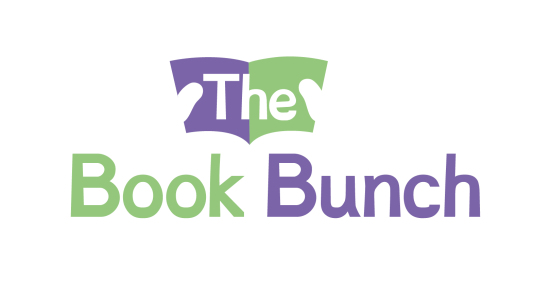
Problems Children Face
They can't get this stuff any other way!
Many of us, both as parents and as educators, make the mistake of assuming that if a child struggles with reading they will gain these skills through some other route. Make no mistake about this, conversations with peers, social media interaction, PSHE lessons, watching the news, researching something on Wikipedia, following your favourite YouTuber; all of these things, whilst they have a place in the modern world, are not enough to teach children about the subtleties of meaning and if they cannot understand things, it hinders their progress in all other areas of their academic development. Modern education is fixated on targets and 'proof' that targets have been achieved in a quick-fix culture that ignores the merits of a careful layering of knowledge.
Everyone is always testing them on what they know RIGHT NOW.
English in particular is a subject that builds up organically. If you show a five year-old a complex sentence they are unlikely to understand its meaning; for one thing they lack the vocabulary, but for another they lack accumulated knowledge. Show that same sentence to a confident Year 6 reader and they will be able to unpick the hidden meanings behind it and understand what the sentence is saying both explicitly and implicitly. Show that same sentence again to a Year 6 pupil who doesn't read and their experience will be the same as that of the five year-old. They lack the framework to understand anything beyond the surface meaning of the sentence.
For example take the following sentence:
James laid the lily gently on the wooden box in front of him and tried to stifle a sob.
A weak reader would read this very literally. They would translate it as 'someone puts something on a wooden box' and would be likely to miss several key pieces of information. They would be unlikely to know that a lily is a flower or to know what the word 'stifle' means. They may also not realise that a sob has anything to do with crying. Most adults, whether readers or not, would be able to use accumulated knowledge to interpret this sentence in more depth. They would understand that this person is sad and may notice that this is because someone has died. A confident reader, however, will instinctively use every word in the sentence to draw conclusions about what is being said. Every word is a signpost pointing the reader to a deeper understanding, but weak readers are often not able to read these signs.
The signposts in this sentence are significant. The key to unlocking the entire sentence is in the words 'wooden box'. Without understanding that it refers to a coffin the sentence is meaningless. A clear hint of this is in the word 'lily', which is a flower traditionally associated with death, something many people would not know. You could argue that the writer should be clearer, by using the word coffin explicitly. However, many weak readers may not understand this word either. Why not, then, say something obvious like 'James put the flower on the wooden coffin which contained the body of his dead sister and tried not to cry'. This is a valid point and unsurprisingly many modern writers have realised that selling books is easier if you don't make your readers think too hard. This persistent dumbing down is self-defeating though. The more readers are spoon-fed information the less they have to think independently. The less they have to think independently the less they are able to interpret the world around them, which will not always be laid out in such clear and obvious detail.
Next the word 'gently' implies tenderness. From this one word alone we can therefore understand that he cares for whoever is in the wooden box. This then contrasts with the word 'stifle' meaning 'cover up' or 'stop', which suggests that although James has strong feelings for the dead person he feels obliged to hide his emotions, whether for cultural reasons - this story could be set in a bygone age when it is considered socially unacceptable for a man to cry - or for narrative reasons relating to other events in the story. Perhaps this is someone he is not supposed to love or it is his fault they are dead or he is trying to set an example for another character in the story. It does not matter that we do not yet know the reasons behind it. What is important is to have a feel for the atmosphere of suppressed grief in this sentence, which lays the foundations for later layers of meaning that will be added. Because weak readers do not have the chance to build up these layers they can become increasingly lost and bewildered as a text progresses. At this point they are likely to give up or decide that they don't 'like' reading and the downward spiral of struggling with comprehension continues.
They are labelled as 'non-readers' too easily and once they are labelled like this it can be hard to come back from.
I believe this process begins very early but it becomes particularly marked when a child reaches the stage when he or she is no longer read to by either parents or teachers. At this point children tend to be categorised as 'readers' or 'non-readers' and as the former begins to stride ahead, the latter can slip between the cracks. Audiobooks are a great way to bridge the gap but it takes a strong parent to enforce the long slow process of absorbing 10 hours of the spoken word when the film version might only be two hours long, and rather more visually stimulating!
It is tempting to think that this is a problem confined to children's school careers. But of course this is not true, for these early struggles with comprehension have serious ramifications in later life. Not only does a low reading ability make higher education less achievable, it also has a knock-on effect on career choices. Then, if by some luck and hard work, these hurdles are overcome, and a 'dream job' is attained, many of these same skills I began by listing are required to do that job effectively.
They read the clues wrongly.
Next up in the problems weak readers face is the ‘leaping to extreme conclusions’-trap. As pupils build up layers of understanding such as the ones I have just explored they become more confident in interpreting information. However, here more pitfalls open up. They begin to enjoy the analytical process (hurray!) and relish the opportunity to use 'clues' to draw conclusions about what is going on in a passage. However, weak readers often cannot differentiate between a logical conclusion, which fits with all the information presented in a text, and pure guesswork. For example, take this sentence:
When the door creaked open, the old woman timidly poked her head out and smiled at the visitor.
There are hints of something slightly sinister in this sentence and if I were to point this out to my class and ask them to identify which word makes it seem sinister, they would enthusiastically pick up on the word ‘creaked’. This word echoes the sound of rusty door hinges and might make the reader think of old houses; perhaps this ‘old woman’ is not able to look after her house very well so it has become ‘creaky’. The word ‘timidly’ confirms this; she is just a frightened little old woman who probably lives alone and is afraid whenever someone knocks on the door. Weak readers, however, would miss the word ‘timidly’. Obviously, they may not know what timid means, but more importantly they will have been blinded by the word ‘creaked’, which came first in the sentence. Once a notion has been planted in a weak reader’s mind, it is difficult for them to modify it with later additional knowledge. Many of the weak readers I have taught would take this sentence and from it draw conclusions like these: the old woman lives in a haunted house; she must be a witch; she is smiling to trick the visitor into coming into her house etc. In my classes we joke about this. I call it ‘extreme interpretation’ and liken it to other extreme sports like skiing and parasailing; it is fun but can be dangerous!
Have a look at an example of real students getting the clues wrong by clicking on this link Case Study No. 2
They assume that challenging reading material will be boring or too difficult
In an independent study of the book reading habits of British students for the 2018-9 school year, Professor Keith Topping, Professor of Education and Social Research at Dundee University http://whatkidsarereading.co.uk/wp-content/uploads/2019/02/UK-WKAR-2019-report.pdf , discovered that modern British children tend to read from a very limited range of authors, many of whom are not producing writing that I would classify as ‘challenging’ enough to give pupils the practice they need at thinking for themselves. There are some notable exceptions to this in the list – of course Roald Dahl remains a constant fixture on any most-read list and rightly so, but unfortunately for all of us he is not likely to produce any more books any time soon (!) so once you have read all of his books, you do reach something of a dead end!
I would never actively deny the merit of reading some of the other writers on the list: David Walliams, Jeff Kinney, Francesca Simon, Zoe Sugg et al all write books that children love, and a love of reading is of course the first step to a life-long improvement in learning. But these writers alone are not enough. They are a stepping stone, not the final goal, and many readers never get beyond this point. The report mentioned above found that while high-ability Year 6 readers tend to tackle books that are suitable for their natural age level, struggling Year 6 readers are reading books two and a half years behind their natural age level. By Year 7, the survey’s findings suggest that even high-ability readers plateau when they make the transition to secondary school and end up “reading at over a year below their chronological age”. The report’s recommendations include this phrase: “pupils should be encouraged to…sustain a higher level of challenge in their reading”. This is where we adults need sometimes to step in. Most children are disheartened by being plunged into books that are too difficult for them and will instinctively choose something they recognise (or have even read before!) or that feels familiar and safe. It is up to us to introduce children gradually to things they would not necessarily choose for themselves and facilitate their understanding through guiding their reading.
It may well be that many readers will never reach the point of choosing to read Jane Austen or Charles Dickens for pleasure even as adults, but we are doing them a grave disservice if we do not at least allow them the opportunity to do so.



